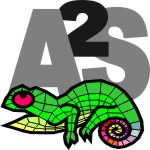“Matrix computations”
home.agh.edu.pl/paszynsk/RM
This subject describes various methods of dense matrix processing, ranging from matrix multiplication methods, solving systems of equations using Gauss elimination, LU and QR factorizations, matrix construction methods for orthogonal projections and reflections, to the design and application of methods for singular values decomposition SVD. The lecture also addresses historical aspects such as the first known matrices derived from Tibet from 650 BC, the first known version of the Gaussian Elimination Algorithm developed in China in 179 BC. In addition, the lecture proposes topics that may lead to scientific publications.

“Strategy of research papers preparations and revision for high impact factor ISI journals”
The main goal of the lecture is to make students familiar with practical methods of preparation of research papers for high impact factor ISI List journals from Q1, Q2, and Q3 quartiles, methods for the preparation of letters with answers to reviewer’s comments, and methods for papers revisions. In particular, during the lecture, we will present examples of papers, revisions, and answers to the reviewer’s comments selected from 50 different papers from 20 different Q1, Q2, and Q3 journals.

“CAE/CAE Systems”
“Simulations of continuous processes and adaptive algorithms”
These subjects cover the issues of constructing of computational meshes and performing computer simulations using classical and isogeometric finite element methods. They cover the scope of the e-manual "Classical and isogeometric finite element method" available on the epodreczniki.open.agh.edu.pl platform. Use one code in MATLAB written by Dr. Maciek Woźniak and Dr. Marcin Łoś. They concern the issues of constructing terrain projection in order to, for example, simulate floods, stationary and non-stationary simulations of heat transport problems, propagation of pollutants or liquid flows.

“Matrix algorithms”
The lecture focuses on modern matrix processing algorithms, starting with dense matrices (like BLAS, LAPACK, FLAME), through rare matrices (processed by multi-frontal and iterative solver algorithms, such (MUMPS, PETSc) to hierarchical matrices. According to the motto that only algorithms with linear computational complexity survive the exponential development of computers, the lecture will be completed with linear H-matrix processing algorithms computational complexity.

“Differential Equations”
The objective of this course is to present basic knowledge concerning the ordinary differential equations (ODEs) as well as mathematical principles and some implementation aspects of numerical methods of solving partial differential equations (PDEs) - in particula, finite difference method (FDM) and finite element method (FEM).

"Concurrency theory”
The idea as well as the formal definition of the concurrent programming will be introduced and explained by using various approaches of their modeling. Modern environments supporting concurrency as well as engineering examples of their application will be shortly described. The problems of managing concurrent application (scheduling, load balancing) will be also considered.

“Stochastic computations”
The course gives the insight into the class of algorithms of searching in a really huge data set. The special emphasis is devoted to the population-based algorithms, their mathematical backgrounds and analysis. The course is advanced, offered to the MSc program. Exercises consists in solving selected global optimization problem defined over a big data set. The suggested standard solution will be supplemented by some new algorithmic inventions introduced by students.

“Stochastic algorithms - applications and analysis”
The course introduces to basic and advanced stochastic strategies searching discrete and “continuous” date sets. Special emphasis was devoted to population-based algorithms and their formal and simulation verification.
The course dedicated to the basic, engineering degree in the UBP AGH program addressed to foreigners thought in English. Exercises, consist in training basic population-based algorithms as SGA and SEA and inspired students to include some new algorithmic inventions which will strength the understanding various aspects of this kind of searches. The system R will be suggested to support implementations.

„Software optimization for different architectures”
The course aims to familiarize students with the basic concepts of software optimization. During classes, students learn how to design and implement algorithms tailored to the given computer architecture. Exercises include independent testing of software effectiveness and then its improvement in accordance with the methodology learned. Engineering subject, offered at first-cycle studies.

“Programming in Fortran”
The course focuses on introducing the student to programming in the modern Fortran. Particular consideration is given to aspects of automatic parallelism, vectorization, and applications for effective numerical calculations (for which the language was created).

“Scientific Circle BIT”
Student activities in the student research club include, among others: participation in research, coordination of research projects (e.g. Rector's Grant), preparation and presentation of papers as part of the session. A student expands and raises the level of his knowledge going beyond the current study program by participating in scientific research works, scientific sessions, conferences, additional courses and specialized training.
